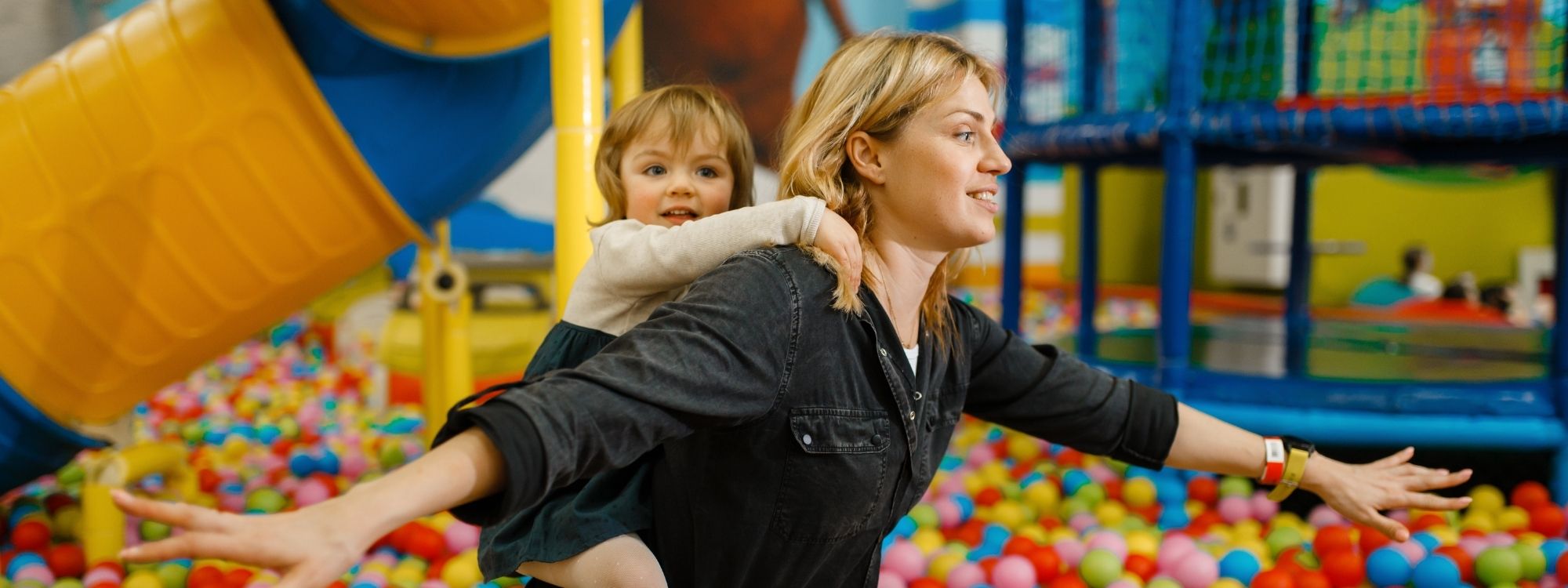Understanding Developmental Milestones for Autism in Early Childhood
Introduction to Autism
Autism Spectrum Disorder (ASD) is a developmental disability that affects how children communicate, interact socially, and process the world around them, particularly during their first few months of life. While it’s commonly recognized through differences in social communication, children with autism also experience a wide range of strengths and challenges that may affect their development differently than most children.
Understanding the early signs of autism is critical for families and caregivers. Recognizing developmental differences early allows for timely evaluations and support. For very young children and toddlers, early intervention services can greatly improve developmental outcomes by targeting key areas like language, motor skills, and social engagement.
By learning about developmental milestones for autism, parents can better track their child’s progress and seek help if needed, ensuring every child has the opportunity to reach their full potential.
Key Takeaway
Understanding developmental milestones for autism can help families recognize early signs and take proactive steps toward support. Keep these key points in mind:
- Milestones vary; children with autism may meet some on time while missing others.
- Red flags include delayed speech, lack of eye contact, and limited social engagement.
- Early intervention, even before a formal diagnosis, can significantly improve outcomes.
- Tracking progress helps families advocate for evaluations and access helpful therapies.
- Professional support ensures children receive personalized care tailored to their needs.
If you’re concerned about missed milestones or developmental differences, early action and expert guidance are essential for helping your child thrive.
Child Development Overview
Child development is a dynamic process that includes learning and mastering skills such as sitting, walking, speaking, and socializing. While every child develops at their own pace, most children tend to reach certain developmental milestones within expected age ranges. These milestones help pediatricians and caregivers assess whether a child will meet developmental milestones as expected or may need additional support.
Development is typically categorized into four main areas: physical, cognitive, language, and social-emotional. Skills like rolling over, recognizing familiar people, playing peek-a-boo, using two-word phrases, or showing interest in other children all reflect progress in one or more of these areas.
When children fall behind in multiple areas or stop gaining new skills, it may signal a developmental delay or other underlying condition. Parents need to share any concerns with the child’s doctor so early assessments or interventions can be arranged.
Developmental Milestones
Developmental milestones are specific abilities that most children reach by certain ages. These include physical movements, communication behaviors, and social interactions. For example, by 6 months, most babies can sit with support, smile at familiar people, and begin babbling. By 24 months, they may use short phrases, follow simple directions, and point to body parts.
Children with autism may develop some of these skills on time while missing others. It’s not always about delay; it can also be about how a child learns or interacts differently. Tracking these milestones helps families and providers spot potential signs of autism early.
Here are a few examples of common milestones, as well as certain milestones that could indicate a need for attention :
- By 6 months: Smiles, shows interest in faces, responds to name
- By 12 months: Babbles with inflection, waves goodbye, looks when someone points
- By 18 months: Uses several single words, imitates actions, plays with toys in expected ways
- By 24 months: Uses two-word phrases, follows simple instructions, engages in pretend play
If a child shows little interest in social games or playing games, avoids eye contact, or doesn’t use gestures like pointing or waving, it may be time to speak with a pediatrician.
Identifying Signs of Autism
Early signs of autism can emerge in infancy or toddlerhood, often before a child turns two. These signs may appear as missed milestones or as differences in how a child engages with people and objects, which may also indicate other developmental disabilities. While signs vary widely, they often involve social communication and repetitive behaviors.
Children with autism may not respond to their name, may avoid eye contact, or may seem uninterested in interacting with other people. They may not play back-and-forth games like peek-a-boo or show little interest in playing with toys or responding to facial expressions the way other children do.
Here are some red flags parents should be aware of:
- Limited or no eye contact
- Not pointing at objects or showing things to others
- Delayed speech or lack of babbling by 12 months
- Little or no interest in other people’s feelings
- Repetitive actions like hand flapping or lining up objects
- Not using gestures like waving or clapping by 12 months
Not all children who miss these milestones will be diagnosed with autism, but early signs should always be discussed with your child’s pediatrician.
Addressing Developmental Delays
When a child doesn’t meet expected milestones, it can be concerning, but early support makes a big difference. Developmental delays mean a child is taking longer than usual to develop skills in one or more areas. For children with autism, delays are often seen in language, social interaction, and sometimes motor skills, making it crucial to provide support early.
Parents can start by requesting a free evaluation through their local early intervention program or their child’s doctor. These evaluations assess speech, motor development, social skills, and more.
The goal of early evaluation is not just to label a condition but to identify what support or therapies a child might benefit from. These could include speech therapy, occupational therapy, or behavioral interventions such as Applied Behavior Analysis (ABA).
By taking action early, families can begin a support plan that helps their child gain new skills and build confidence.
The Importance of Early Intervention
Early intervention is a set of services designed to support children under age three who have developmental delays or disabilities, including autism. The earlier a child begins intervention, especially with access to free resources, the better the chances they have of developing critical skills.
Research shows that starting therapy during a child’s earliest years leads to stronger progress in areas like speech, social skills, and emotional regulation. Intervention is most effective when it happens in natural settings, like the home, daycare, or playground, where the child feels safe and supported.
Early intervention may include:
- Speech therapy to develop language and communication skills
- Occupational therapy to improve motor coordination and daily routines
- ABA therapy to teach social behaviors and reduce problem behaviors
Parents should not wait for a formal autism diagnosis to begin seeking services. If there are signs of delay, intervention can begin right away, often through state-funded programs or healthcare providers.
Supporting Children with Autism
Supporting a child with autism means creating an environment that embraces their unique strengths while providing structure and tools to navigate challenges. This support should extend across home, school, and community settings, especially as the child grows into an older child.
Children with autism often thrive with consistency and predictability. Creating daily routines, preparing them for transitions, and using visual aids or clear instructions can help them feel more secure. Some may need sensory-friendly environments or accommodations that reduce stress.
Families can also access specialized therapies like ABA and social skills groups. Education plans, such as an IEP (Individualized Education Program), ensure school-based support tailored to the child’s needs. By working together with educators, therapists, and doctors, families help their children grow in confidence and capability.
Milestones Checklist by Age
Tracking developmental milestones by age can give parents a clearer view of what to expect and when to raise concerns. These checklists are not meant to cause worry, but rather to support early identification of developmental delays, especially with small objects, and timely conversations with healthcare providers.
Below is a simplified checklist of typical milestones by age group:
| Age | Common Milestones |
|---|---|
| 6 months | Smiles socially, coos, responds to name, and shows interest in faces |
| 12 months | Says simple words, waves, plays peek-a-boo, and follows gestures |
| 18 months | Uses 10+ words, points to objects, plays pretend, and imitates others |
| 24 months | Combines 2–3 words, follows two-step instructions, enjoys group play |
If a child is missing multiple milestones or regresses, such as losing speech or social skills they once had, it’s important to bring this to a doctor’s attention.
Autism vs Developmental Delay: What’s the Difference?
While autism and developmental delay can look similar in early childhood, they are not the same. A developmental delay means a child is developing skills more slowly than peers, but may catch up over time. Autism, on the other hand, includes specific patterns of behavior and social communication that persist over time.
For example, a child with a language delay may have trouble forming words but still show interest in social interaction. A child with autism may also have language delays, but combined with limited eye contact, repetitive behaviors, and difficulty with back-and-forth exchanges.
A professional evaluation helps determine the root cause and guides families toward the most appropriate support. Both situations benefit from early intervention, but the strategies and long-term planning may differ.
Conclusion
Autism is a complex developmental condition, but with awareness, early identification, and the right support, children can thrive. Understanding developmental milestones for autism, starting from birth, helps families notice early differences and seek timely help. With individualized support, children with autism can build new skills, develop meaningful relationships, and enjoy full, rewarding lives.
Noticing developmental differences in your child and unsure what to do next? At Champions ABA, we specialize in early intervention that’s personalized to your child’s needs. From milestone tracking to in-home ABA therapy, our team is here to support your family with care and clarity. Call (877) 242-1744 or visit our website to take the first step toward helping your child thrive.
FAQs
What are the milestones for autism in babies?
Babies with autism may show delayed or different responses to social interaction, communication, or play. For example, they might avoid eye contact, not respond to their name, or show little interest in playing with familiar people. These early signs can emerge by 12 months and should be discussed with a pediatrician.
What is the developmental age of autism?
Autism doesn’t have a fixed developmental age. Children with autism may excel in some areas while showing delays in others. Developmental age assessments help identify strengths and challenges to provide personalized support.
What are the five developmental milestones?
The five major areas of developmental milestones are: physical (motor), cognitive (thinking and problem-solving), communication (speech and language), social-emotional (interacting with others), and self-help (daily living skills). Tracking progress in these areas helps spot potential developmental concerns.
What milestones do autistic children miss?
Autistic children may miss or delay milestones such as babbling, pointing, responding to names, using simple phrases, or engaging in pretend play. They may also show repetitive behaviors or sensitivity to sounds and textures. Each child is different, so a thorough evaluation is important.



